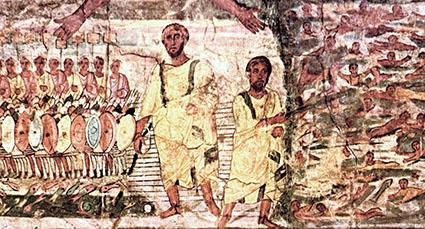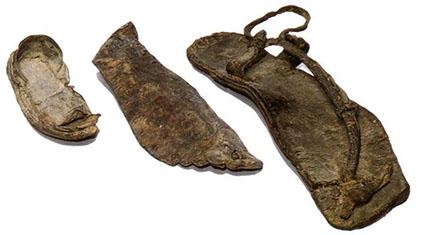- For the first followers, the Savior’s appearance was not interesting
- He has a short haircut and a small beard, is wearing a knee-length tunic, short sleeves and a hemathion
Historians have long disagreed – Jesus is a historical figure, he lived in ancient Palestine, he was a Jew, he preached Jewish law in his own way, he taught virtues that we still respect and observe today, whether we are believers or not. What scientists can’t give us, though, is what did Jesus look like? What color was his skin, how tall was he, what clothes did he wear, what did his face look like? No, you say, everyone knows who Jesus is. He is the most portrayed figure in all of Western art, and we can recognize him wherever we turn. Of course, this is a delusion, and how Jesus really looked is one of the most mind-numbing mysteries of ancient history.
Known and unknown, Son of God, but also man
We are convinced that we can recognize Jesus because his image is overexposed in art, cinema and literature. We meet paintings and sculptures with him in countless Christian temples, homes, public buildings. He has European features, has brown (and often blond) hair and light brown or blue eyes. His face is elongated, his nose sharp and strong-willed, he has long hair and a beard of various sizes. His clothes are also long – a tunic to the ground and with wide baggy sleeves, as well as a large mantle. He looks well-groomed, with well-combed hair, healthy teeth, clean as a tear, and his clothes are always like new.
The latter does not apply to those paintings, books, theatrical productions and films that depict the sufferings and crucifixion of Christ, but we have a pretty good idea of this. Even too dramatic, if we recall the film “The Passion of the Christ” directed by Mel Gibson. The actor in the role of Jesus there is Jim Caviezel – the perfect handsome man – tall, with a well-built body, dark hair and blue eyes. It is precisely this that does not correspond at all to the evidence that archaeologists have unearthed about the appearance of the average man from the time of Christ.
But, the hero should rather be between 1.65 and 1.70 m tall and weigh no more than 60 kg. Given the difficult conditions in which Jesus lived, that he was from a poor, hard-working family, our view of him is changing dramatically. The time of his preaching is an example of an ascetic way of life, including long walks. He was probably a very tough peasant, as hard as stone and about as attractive. And the images in icons, paintings, statues, books, plays and movies are the result of two millennia of cultural history. The first images of Jesus set the pattern, which is still shown today – a ruler who has largely the appearance of pagan gods.
Hair, beard, face … it’s all from the Greco-Roman world. Some of the most ancient surviving drawings and figures of Jesus generally depict him as a younger version of the supreme god Jupiter or his sea brother Neptune. Even the halo of the sun god Apollo was added to Jesus’ head to show his heavenly nature. In early Christian art there is also a large curly hair like the god Dionysus. These images do not show Jesus Christ as a man, but cultivate him, make him radiate the dignity of a king, judge and Son of God, but not a peasant who traveled around ancient Judea.
How to imagine an earthly Jesus
 Worryingly, it is impossible to be sure what Jesus looked like. Even just because his appearance was of almost no interest to his first followers. They were Jews raised in a faith that strictly forbade the depiction of the divine. In the Gospels of the New Testament, however, he is not described as tall or short, good-looking or plain, muscular or frail. In what Matthew and Luke describe, we learn that Jesus was born in Bethlehem as a child, spending some time with his parents in Egypt before returning to Galilee and living in Nazareth. At the age of “about thirty” he began his career as a preacher, but there is nothing to distinguish him from others around him, at least in appearance. Matthew and Luke, as well as Mark and John, do not leave us information about what Jesus looks like, there are only some references to the clothing he and his disciples wear.
Worryingly, it is impossible to be sure what Jesus looked like. Even just because his appearance was of almost no interest to his first followers. They were Jews raised in a faith that strictly forbade the depiction of the divine. In the Gospels of the New Testament, however, he is not described as tall or short, good-looking or plain, muscular or frail. In what Matthew and Luke describe, we learn that Jesus was born in Bethlehem as a child, spending some time with his parents in Egypt before returning to Galilee and living in Nazareth. At the age of “about thirty” he began his career as a preacher, but there is nothing to distinguish him from others around him, at least in appearance. Matthew and Luke, as well as Mark and John, do not leave us information about what Jesus looks like, there are only some references to the clothing he and his disciples wear.
The teacher’s clothes
In the time of Jesus, long garments were worn by wealthy men on special occasions and to show their status in society. The Gospel of Mark says, “Beware of the scribes who love to walk in disguise and receive greetings in the markets, and the first chairs in the synagogues, and the first places in the feasts.” The words of Jesus are usually considered to be closer to reality scriptures in the Gospels, ie. we can trust them. So we can assume that he really did not wear such clothes.
In that era, the man usually wore a knee-length tunic (chiton) and the woman ankle-length tunic. Wearing a chiton of women’s length would be a rather strange form of expression on the part of a male. A mantle (himation) was placed on the tunic, and we know that Jesus wears one because it was touched by a woman who sought healing from him in one of the cases in the Gospel of Mark. The mantle is made of a large piece of woolen cloth, not very thick, so two pieces of it had to be placed in colder weather. The himation can be worn in different ways, hanging below the knees and completely covering the shorter tunic.
The quality, size and color of the mantles are important. Purple and some shades of blue show greatness and respect. They are regal colors because the dyes used to make them are rare and expensive. Jesus does not wear pure white. In Judea, it is a hallmark of the Essay sect, which follows a strict interpretation of Jewish law. In the scene of the Transfiguration, the Gospel of Mark shows that before the event Jesus did not wear pure white: “His clothes became shiny, too white, like snow, which a bleach on earth cannot whiten.” It is logical that before the Transfiguration Jesus should be worn as an ordinary person, with the usual clothes for the time, made of undyed wool, ie. not pure white.
Other details of Jesus’ clothing are described in the moments of his execution, when the Roman soldiers, as recorded in the Gospel of John, shared his garments: A soldier in one piece; they also took the garment. And the garment was not sewn, but woven whole from top to bottom.
 Feet shod in sandals
Feet shod in sandals
Jesus must have worn sandals on his feet, like everyone else in those days. Sandals from the age of Jesus have been found in the desert caves near the Dead Sea and Masada, so we can see exactly what they were. Quite ordinary, with soles of sewn thick pieces of leather, with leather straps passing between the toes.
The face and head of the sage
Jesus is a Jew (from Judea) and his features are inevitably Jewish. Its origins are judged from numerous written sources, including the Apostle Paul’s epistles in the New Testament. The Epistle to the Hebrews testifies to this: “(E) For it is evident that our Lord is risen from Judah.” So, what a Jew must have been from that time, described by Luke: “Jesus was about thirty years old when he began his ministry.”
In 2001, for the documentary “Son of God”, BBC television commissioned a forensic anthropologist to create a model of a man from Galilee. He uses an actual skull found in the area in present-day Israel. Of course, the anthropologist does not claim that the face and head of Jesus were exactly like that. His idea is to show the audience that Jesus is a man of his time and homeland. There is no evidence that he differed from his compatriots in appearance.
Leaving aside the modeling with ancient bone remains, perhaps the best evidence of what Jesus looked like is in the image of Moses on the walls of a synagogue from the third century in Dura-Europos (in present-day Syria, where the remains of the world’s oldest Christian church). Moses there shows how they imagined a Jewish sage in the Greco-Roman world. This image is much more correct as a basis for presenting the historical Jesus, compared to later Byzantine templates for painting the Savior. He has a short haircut and a small beard, is wearing a knee-length tunic, short sleeves and a hemathion.
Thanks to archeology, modern scholars undoubtedly know more about the current landscape in which Jesus lived. Nevertheless, the images of Jesus that we continue to create in various fields of art show that no matter how realistic we want to see Christ, he will always be shaped by our own culture and our prejudices. For now, the “true” face of Jesus remains a more or less blank canvas, which each generation paints, demonstrating its faith and virtues, but also its shortcomings.
Tags:
–


